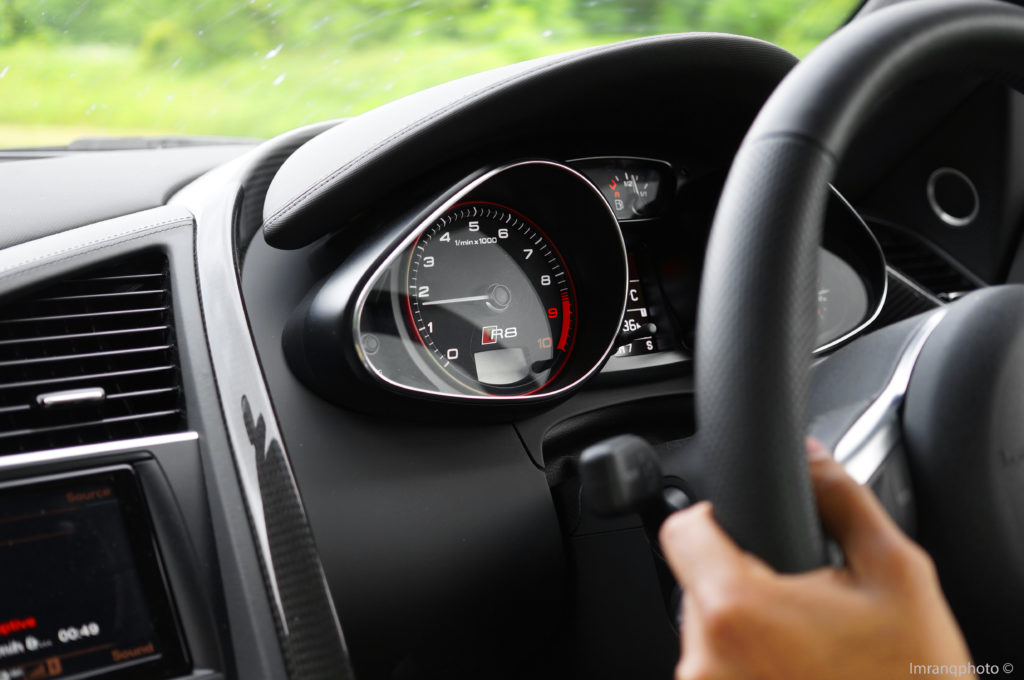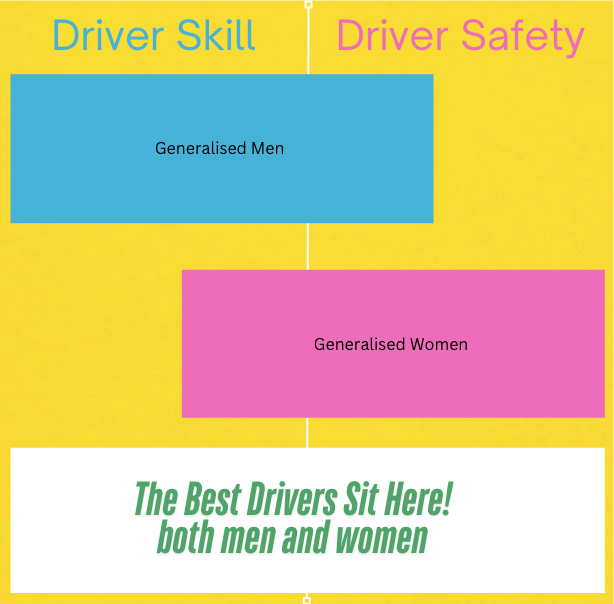The debate over who are the best drivers, men or women, has been ongoing for years, often fueled by frustrations, stereotypes, jokes and misconceptions. However, when we look at the question objectively by considering statistics, real-world data, and the differences in driving behaviour, an interesting and complex picture emerges.
The Stereotype
The stereotype that men are ‘better drivers’ than women is rooted in history, motorsport, culture and the way they are generally portrayed in the media. Men are more likely to take risks, drive faster, have more interest in cars, and often get involved in competitive driving. These assumptions have led to a long-standing belief that men simply are better drivers…
But are they?
To answer this question, we need to split out the thinking behind “driver skill” and “driver safety” – the two key elements of driving. The best drivers around will have a mix of exceptional driver skill and safety – for road driving, that is.
What is driver skill?
This is more of a tactical driving element which relates to: reaction times, spatial awareness, confidence, focus, hand-eye coordination, vehicle control accuracy, risk-taking etc.
What is driver safety?
This looks at more of a strategic element to driving, which includes: understanding the consequences of excessive speed, thinking about other drivers, thinking about one’s own safety, obeying the rules of the road, prioritising safety over risk-taking etc.
Both driver skill and safety overlap in places. But for this article, we will keep them separate.
Let’s take a closer look at males and females and, more importantly, what drives them to act, or should we say, drive, like they do.
Male Insight:
One word. Testosterone.
Testosterone plays a significant role in shaping behaviour, and one area where its influence is particularly noticeable is in risk-taking. Studies have shown that testosterone is linked to behaviours involving risk and competition. Testosterone has been shown to increase sensitivity to rewards and the potential for positive outcomes – i.e. winning a race. People with higher testosterone levels tend to focus more on the potential rewards of a situation, which can lead to an increased willingness to take risks. As men age, testosterone levels naturally decline, which often correlates with a decrease in risk-taking behaviours. Younger individuals, particularly those in their 20s and 30s, typically have higher levels of testosterone and may display more risk-taking behaviours than older individuals, whose testosterone levels are lower.
Testosterone plays a significant role in various cognitive functions, including spatial awareness. A key component of driver skill.

Female Insight:
The hormones that influence a woman’s behaviour, particularly traits around safety, caution, and thoughtfulness, a reason why they may take fewer risks when driving, are largely related to oxytocin, estrogen, and progesterone. These hormones affect emotional regulation, empathy, and the way individuals respond to stress.
Women with higher oxytocin levels may be more aware of the needs of others and act in a more nurturing and careful manner. Estrogen has been shown to influence risk perception, with women exhibiting more caution in risky situations. Like oxytocin, progesterone has been shown to promote nurturing and protective behaviours, making women more inclined to prioritise the safety and well-being of others.
These hormones play a key role in nurturing and risk-avoiding behaviours. A key skill in making a safer driver.

Other Points:
There have been a lot of statistics which prove, time and again, that women have fewer collisions than men. There is no disputing this fact. However, it’s not fair to use this as exclusive proof that women are ‘better’ drivers; in the same way, it’s not fair to say all F1 drivers are men, so men, generally, must be better.
Men generally drive larger, faster cars, more men drive vans and HGVs and also, on average, drive more miles than women, which would partly explain their increased collision risk. But only to a degree.
So, to answer the question, who are the best drivers?
We had to come to this point sooner or later, and it’s not an easy one. The answer, in our experience, is somewhat of a split result, where a significant element of generalisation has to be built in. Men tend to have a better level of driving skill than women. They have their testosterone to thank for that. But equally, it’s their testosterone which also puts them at more risk of collisions.
Women, on the other hand, tend to be safer drivers – collision rates are significantly lower for women. While they don’t have the tactical driving skill that men tend to possess, they think more about the implications of speed and are less likely to get caught up in risky behaviour.
There will be women and men who will completely contradict the above points. If you’re one of them, sorry – we don’t mean to offend. Also, some will argue that an element of driver skill is indeed safety and vice-versa. This, again, is true. As mentioned before, there are overlaps in both these points.
Below is a diagram which outlines how we feel men and women sit on the skill/safety scale. Notice how the best drivers around cover both sides. This is a huge generalisation, but it goes some way to explain men vs women and why it’s such a grey area.


